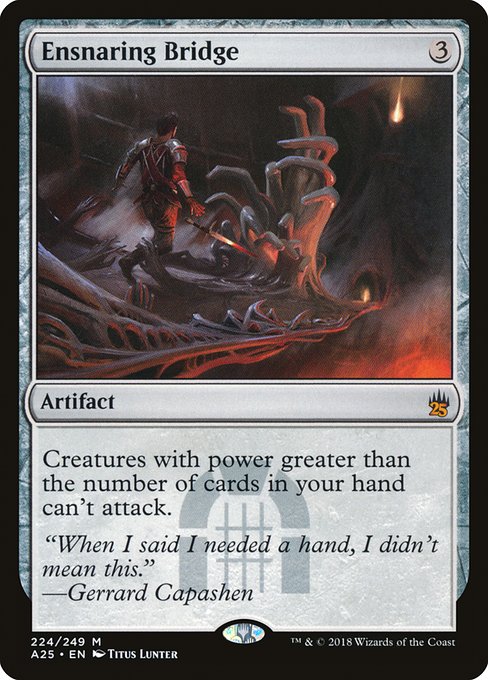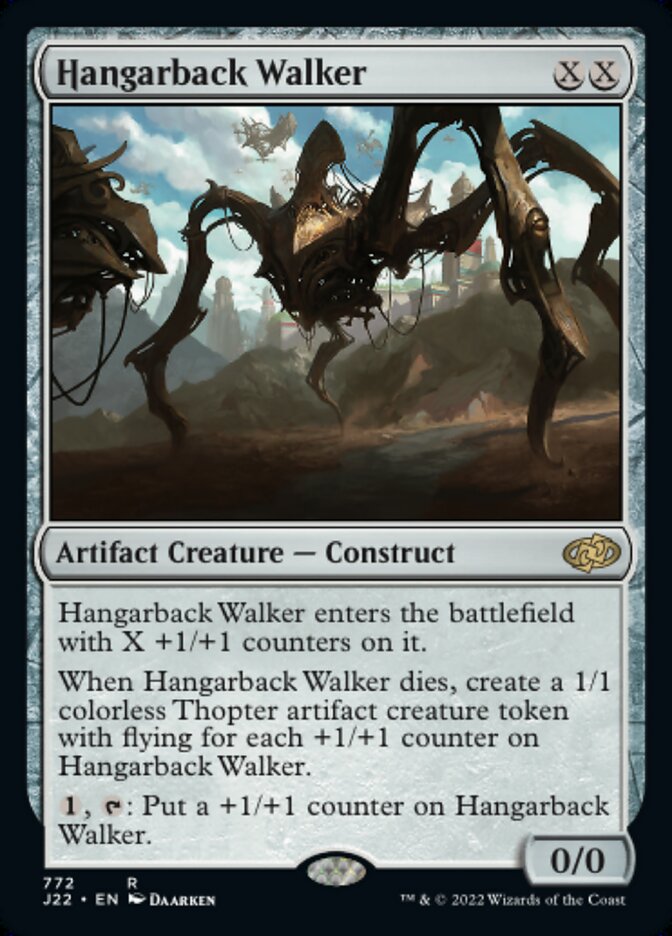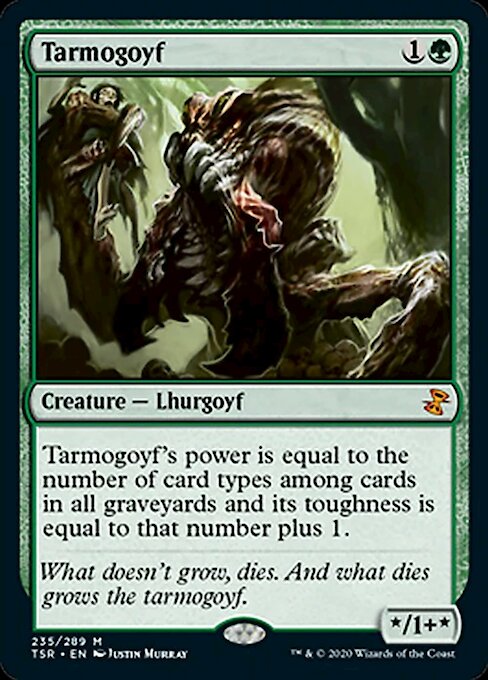Are you a Quiet Speculation member?
If not, now is a perfect time to join up! Our powerful tools, breaking-news analysis, and exclusive Discord channel will make sure you stay up to date and ahead of the curve.
We're in between major Modern events for the next few weeks, so you might have missed the Regional Pro Tour Qualifier (RPTQ) lists Wizards posted last week.
With almost twenty Top 8's posted, representing some of the best up-and-coming players, the RPTQs give us a useful sneak peek of the metagame leading up to Grand Prix Pittsburgh. This will help us figure out what's poised to make Modern waves and, by extension, which cards we should buy before their profile rises.
As we've seen before, you don't want to get too far behind a post-Grand Prix price spike!
Today, we'll look at two Modern cards that were already well-positioned even before the RPTQs. I'll be drawing on the RPTQ lists as well as some metagame trends I observed in my October metagame breakdown on Modern Nexus last week.
Players qualify for the RPTQ either by winning a PPTQ or with Silver pro status, so we're looking at a metagame where the average player is better than at a weekend StarCityGames venue. This lets us use the RPTQ Top 8's as November indicators for our October metagame trends.
Based on the October metagame data and the first round of RPTQ lists, I noticed two cards you'll want to keep your eye on as we get closer to Pittsburgh. You'll have to decide whether to buy now or to wait until the eve of the event, but if history is any indication, the game of Modern finance always goes to the swift.
Hangarback Walker
This Standard all-star had a huge showing at the RPTQ and is in a great metagame position to do even more. Hangarback Walker is seeing extensive Modern play in Affinity and Jund these days. I fully expect it to become a mainstream staple in Affinity's 75, and a regular element of the Jund core.
Affinity was the most played deck in Modern in both September and October. Although its metagame share declined between those two periods, it's still the deck you are most likely to see at a Modern event.
Following Affinity's 1.7% decrease from September to October, we know the deck is looking for new cards to make up for its weaknesses, and Hangarback fits that bill nicely.
The Walker is a great mid-game threat that starts by going big and ends by going wide. Stick a Cranial Plating on it to create a must-block threat. When the Walker dies, take to the skies with the remaining tokens.
Walker is much more effective against Stony Silence than many of Affinity's threats, and with the exception of Etched Champion, is the only Affinity staple that laughs Ancient Grudge out of the room. Decks are more prepared for Affinity than ever before, and Hangarback stacks up nicely against the varied hate.
We saw a ton of Hangarback Affinity at the RPTQ scene last weekend. Roughly 50% of Affinity decks used at least one copy of Hangarback in the maindeck, with one build relegating it to the sideboard. I expect we'll see more Affinity pilots adopting Walker as we get closer to Pittsburgh, especially if the format tends towards fairer decks where Hangarback really shines.
Walker might be leaving the biggest impression on Affinity decks, but you can also find the artifact creature in Jund.
Yasunori Baba piloted a Hangarback Jund list to 2nd place in Tokyo, a finish that should definitely pique our interest. With 144 players, the Tokyo RPTQ was the largest event in the series, representing a well developed Japanese Magic scene that is never light on innovation.
Yasunori's list couldn't take better advantage of Hangarback.
Dark Confidant flips the effective four-drop for just zero life, allowing Jund to play more curve toppers while actually lowering Bob's average life loss.
Dead Walkers grow Tarmogoyf by feeding it an artifact, or get recurred with Kolaghan's Command. A returned Walker gets even nastier in the late game, when you have more mana to dump into the artifact and when the 1/1 thopters are more likely to break open a stalled board.
Finally, Pia and Kiran Nalaar can hurl thopters at enemy creatures or straight to the face. The recurring Aether Shockwave gives Jund a level of reach normally reserved for Snapcaster/Bolt decks.
From a price perspective, Hangarback isn't the cheapest investment target in Modern. You can do a lot better than $14 when speculating on singles, but there's a lot of upside to this card.
Walker is also seeing plenty of Standard play right now (see Brent Clawson's GP Indianapolis-winning Abzan Aggro list), and cards with dual Modern/Standard playability tend to command huge pricetags. Jace, Vryn's Prodigy // Jace, Telepath Unbound is a particularly outrageous example of this.
If you have Hangarbacks, hold onto them as they keep carving out a Modern niche. If not, look for a dip in price if Abzan decks lose ground in Standard, and definitely think about picking them up when Magic Origins rotates out next year.
Rise // Fall
Some of you will probably have to look up Rise // Fall, especially if you are a newer entrant into Modern who hasn't yet embarked on the Great Gatherer Search for Modern Playables.
That's about the only place you would've found this oddball split card from the old Ravnica block. Get used to it, because there's a good chance we'll start seeing more of the versatile Grixis uncommon as the metagame evolves.

It's no secret that fair decks aren't exactly where you want to be in Modern.
On the one hand, you have Jund. The BGx mainstay enjoyed significant success in October, both at the share-of-the-metagame level and the event level. It's one of the top three most played decks overall, and had a decent conversion rate at SCG Dallas and GP Porto Alegre. At the GP, it was the most played deck on Day 2.
Then there's Grixis, which has wallowed around the 2%-4% metagame share range since August and is struggling to cast Cryptic Command in a field that often wants to win on turn three.
What's a Grxis mage to do? Get faster.
We've seen a bunch of "Grixis Control 2.0" since the summer, notably Michael Majors' list which he piloted to a 5th place finish back at SCG's Charlotte Open in August.
Majors' innovations saw scattered adoption after Charlotte, but it was only recently that we've seen a concerted shift towards faster Grixis cards. Danny Jessup piloted a Grixis Midrange list to 22nd at the recent SCG Open in Dallas, and we saw RPTQ examples of this in Marc Beaulieu at Montreal and Chi Hoi Yim at Roswell.
Rising pro player and Grixis aficionado Trevor Holmes recently wrote about the evolving Grixis shell on Modern Nexus. Rise // Fall is an integral piece of this discard-packing, removal-heavy strategy.
The split card gives Grixis a few edges. For one, it's often a Hymn to Tourach against the land-light aggressive decks in Modern. You know what I want to do in Modern? Cast Hymn to Tourach. That sounds as unfair on paper as it feels in a game, and you won't know it until you give it a try.
This mode gets significantly worse against the 24+ lands used by fair decks, but it's exceptional in the Burn, Affinity and Gruul Zoo matchups.
The Rise mode packages an Command of Unsummoning and Raise Dead into a single card, which gives you decent interaction against enemy decks and recursion for your delve fatties.
It's also an excellent way to leverage Jace, Vryn's Prodigy // Jace, Telepath Unbound's fragile body. Losing Jace to a Lightning Bolt is fine against decks with limited damage options (losing it to a Searing Blaze is significantly worse). Rise brings Jace back for more action, buying you tempo from the wasted damage spell and tempo again from the bounce.
As long as Grixis players use Jace to control the board, particularly with all the two-mana removal options like Exterminate!, Dreadbore, and Go for the Throat, Rise // Fall will be a necessary inclusion.
Hangarback Walker sees multi-format play and is already $14 based on a few months of playability. Rise // Fall is the opposite, a niche Modern sleeper that's laughably undervalued at around a dollar. Dissension didn't see a lot of opened packs, so the card's ceiling is much higher than the current price tag suggests.
Foil Rise // Falls already got hit with a buyout (good luck finding one for less than $40 right now) but if you can pick one up for under $20 then don't miss out.
Grixis decks didn't have a lot of luck from August through October, but their fortunes seem to be reversing as players try out new midrange-oriented builds.
Rise // Fall is integral to this approach, especially as players start using more Jace, Vryn's Prodigy // Jace, Telepath Unbound. We all remember the Kolaghan's Command increase earlier this year, and Rise // Fall could easily follow that trajectory as Grixis decks pick up traction.
More RPTQ Action to Come!
Wizards promised to publish the rest of the RPTQs after this last weekend, so keep an eye out for those lists later this week. Assuming we get some cool tech out of those events (I'm hoping for some more Protean Hulk- Footsteps of the Goryo results!), I'll be back next week with more Modern investment targets.
What other cards did you notice at the RPTQs? Any Modern sleepers you see rising as we get closer to Pittsburgh? Bring it down to the comments and I'll see you all next week!























This is a great article. Pia and Kiran are an interesting tech right now. Baba showed the synergy between Hangarback, Command and Pia &K.
Rise // Fall is just powerful enough and versatile enough to sustain play. It essentially is a Crisis Command.